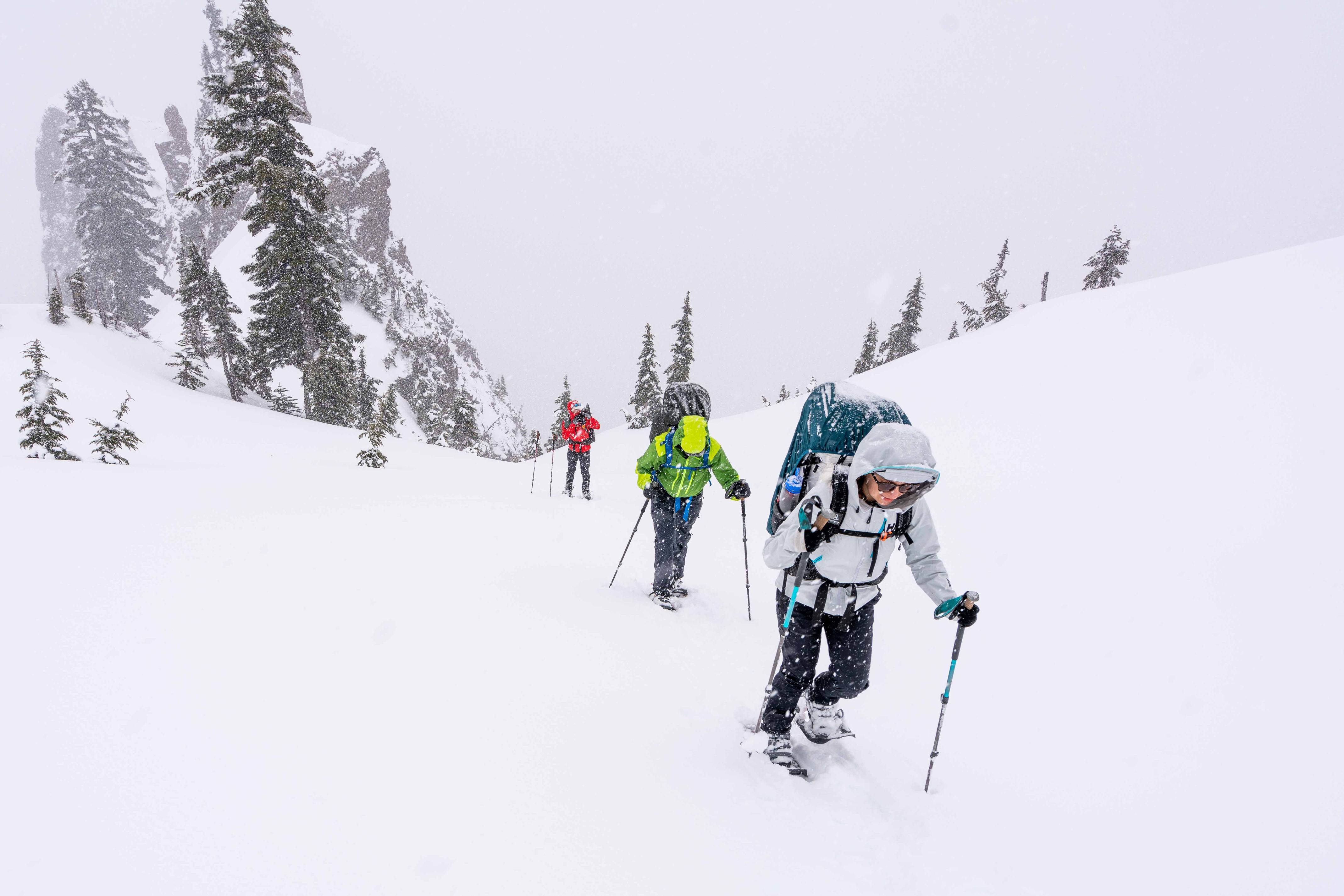How to Go Snow Camping in Washington State
The products listed here were selected by a member of the editorial staff. Should you choose to purchase a product through a link on this page, we may receive an affiliate commission.

Camping under the stars in Mount Rainier National Park.
What the heck is snow camping? Just what it sounds like—sleeping outside in winter, enjoying the Pacific Northwest wilderness even when it's blanketed in a blizzard. All it takes is thick socks and a little know-how.
1. Be bold
Figured sleeping on snow was for intrepid mountaineers and masochists? Nope. Beginner backpackers can expand their outdoor horizons past the first frost with a little planning and the right gear. Plus, it’s great way to actually enjoy the dark stretch of Northwest winter.
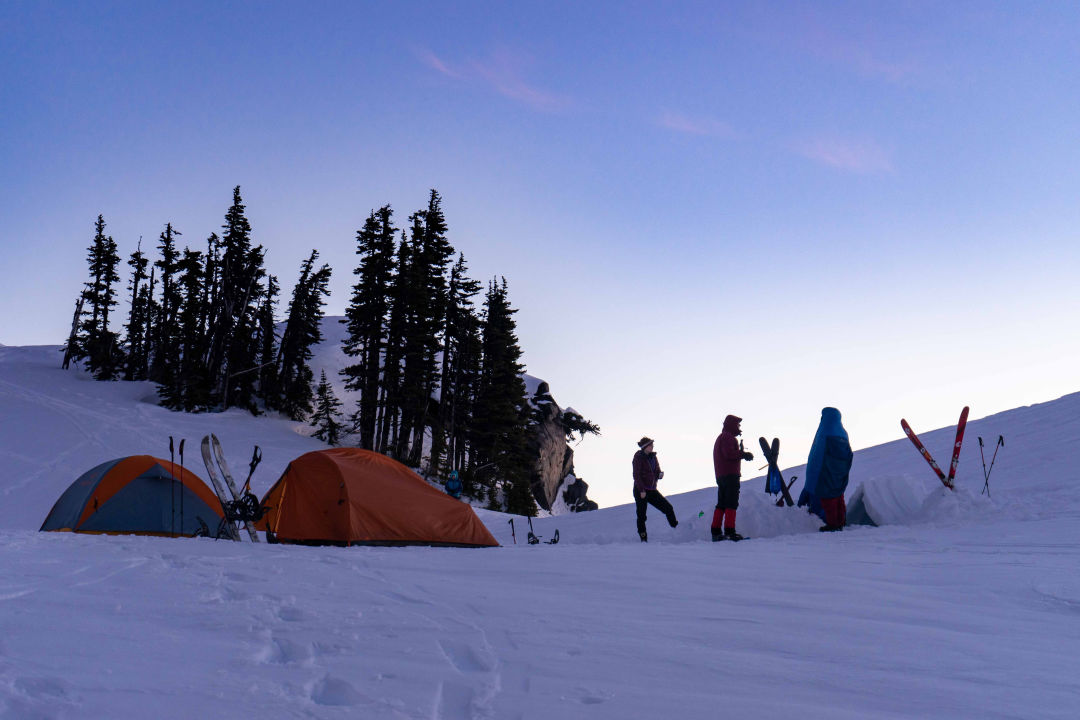
Campers take in the view at Artist Point near Mount Baker Ski Area.
Image: Nate Brown
2. Be savvy
Snow turns almost any terrain into a flat surface, but that doesn’t mean you can hunker down just anywhere. Permits are required to sleep in Mount Rainier National Park, for example, and tents parked beneath a tree can get hit when branches shed snow bombs. Don’t overreach when selecting a campsite: Thanks to the muffling powers of a snowdrift or two, you needn’t hike far to feel perfectly isolated.
3. Gimme shelter
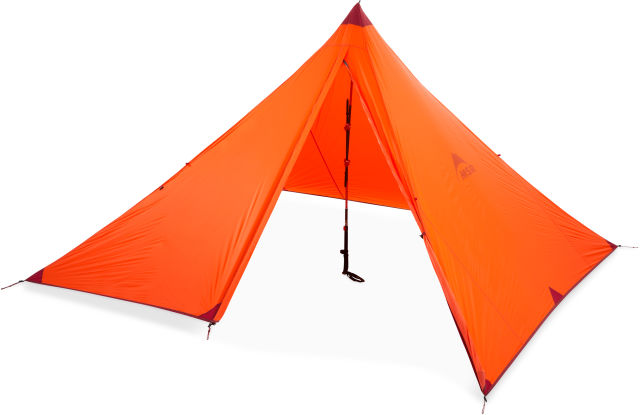
Snow caves have provided humans shelter for millennia, but we modern folk can select from all manner of tents; many overnighters use traditional tent-and-fly models constructed with hardier materials than summer versions. Look for a "four-season" tent for one made for winter. Local gear maker MSR—who also creates extreme snowshoes—has the one-piece, triangle-shaped Front Range Ultralight Tarp Shelter that can be erected with a hiking pole.
4. Let it go
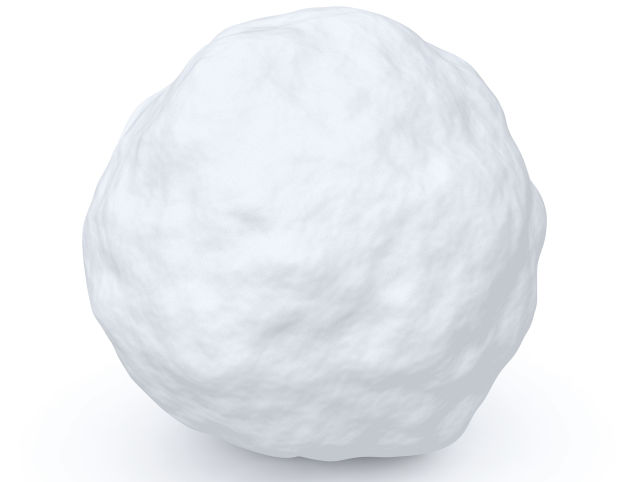
Chores abound on a winter overnight—shovel this, melt that—but time to explore is clutch. The decorative power of snow makes everything pretty, and pleasures as simple as snowball fights or Frozen reenactments do double duty as entertainment and self-warming.
5. Get heated
If you do nothing else, remember this: Make a hot water bottle before bed. Boil snow (line the stove pot with a little water first) and pour in a plastic container like a Nalgene; inside a sleeping bag, it’ll radiate blessed toastiness all night. Don’t be surprised if you wake up cuddling it like a teddy bear.
6. Sleep tight
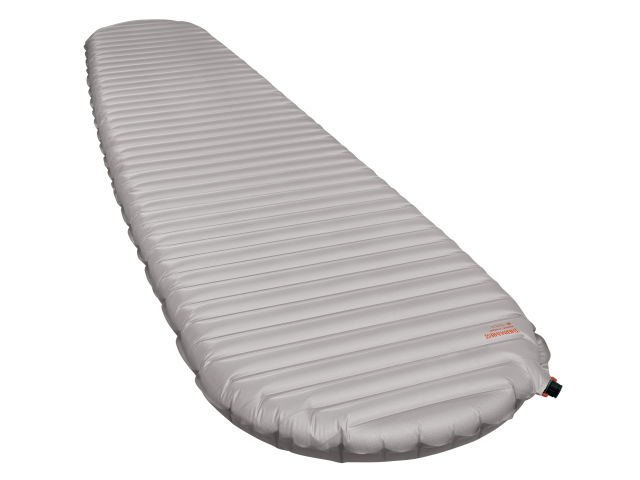
Sure, sleeping bags are important for cold weather rest—definitely don’t skimp—but the sleeping pad underneath is the real secret to satisfying slumber. One of the warmest pads on the market is made in Seattle: Thermarest’s uber-insulating NeoAir XTherm is a snowtop classic for a reason.
7. Chow down
Permission to gorge yourself is one of the joys of winter adventures; calories mean energy, which means warmth. Local outdoor stores from behemoth REI to West Seattle's funky Mountain to Sound Outfitters sell dehydrated meals, which deliver dense food for their package size.
8. Night vision
Cold winter skies hold less moisture, turning them crystal clear more often. Set an alarm to star watch in the middle of the night for a chance at viewing the Milky Way in its bespeckled glory. Tip for night photography: Illuminate a headlamp inside the tent for the glowy effect.
9. Feet first
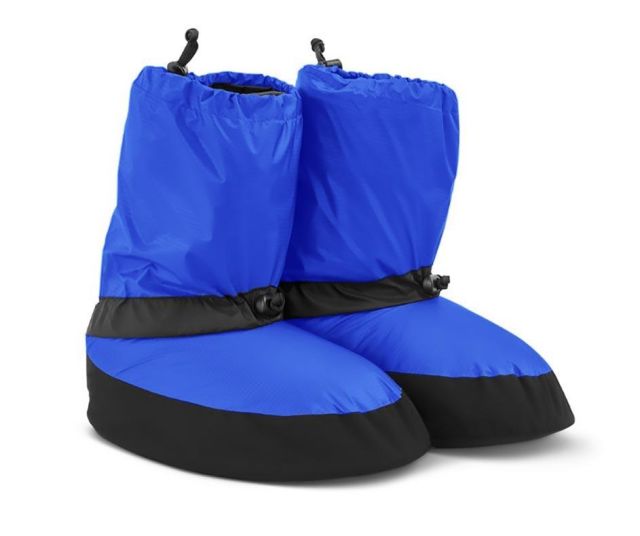
The bootie call is essential to the frigid sleepover, just not that kind. SoDo-based Feathered Friends manufactures down booties that should be incorporated into day-to-day Seattle fashion.
10. Cheers
Congratulate yourself on the way home. You’re tougher than you thought, pioneer! (And if you hated it, spring nights and hammock weather are right around the corner.)
Product photos courtesy the vendors.
